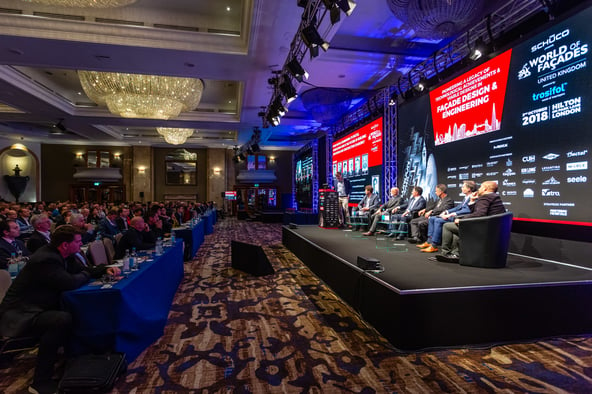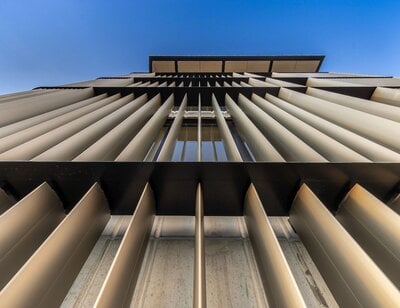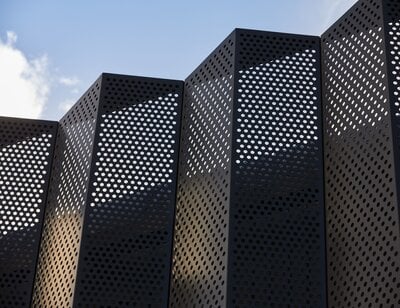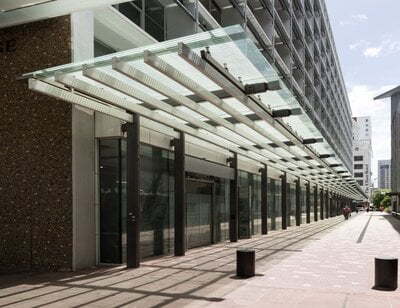Zak World of Façades is an invitation-only conference series entirely dedicated to façade design and engineering, with events in different parts of the world.
 Image sourced from Zak World of Facades.
Image sourced from Zak World of Facades.
Insol was proud to be invited to the European edition, which took place in London on the 4th of October. It was an exciting opportunity to get to meet the most expert operators in façade engineering and talk about the innovations and challenges of our industry.
In this blog article I’ll do a recap of the most important insights of that day.
Want more content from Insol? Check out our Resources page here.
Conference sessions
Russell Cole, Associate Director, Arup
“What will disrupt the current façade technology status quo?”
Cole defined disruption as innovations that rapidly change the status quo, as opposed to trends, which bring gradual improvements. He noted that the façade sector is in great need of disruption, especially regarding productivity.
He then pointed out some areas where he thought disruption would come from:
- low environmental impact materials (like timber and recycled materials);
- bio composite façade products (i.e. things that grow) or aluminium;
- photovoltaics;
- on-site 3D printing;
- responsive façades, although those will need improvements in motors, drivers, actuators and batteries.
John Bushell, Principal at Kohn Pedersen Fox
“Pushing the envelope - Performance, character and innovation”
Bushell highlighted the direct impact that design can have on the quality of life in urban areas. Up to a certain point, high development density and liveability go hand in hand, but they soon become inversely related. Design can correct the downward curve, mitigating the impact that a high concentration of dwellings has on liveability.
Winfried Heusler, Senior Vice President at Schüco International
“Façades for our common future - Requirements & potentials”
Heusler’s presentation focused on the importance of façades in urban areas, where population is expected to reach 6.5 billion people worldwide by 2050. That’s three billion more than what we have now.
To ensure an acceptable standard of life for everyone, the priorities will be optimizing health and safety and minimizing CO₂ emissions. Façade design can play a major role in achieving those goals, as long as the human being is at the centre.
Panel discussions
Here are the most interesting points that emerged from the panel discussions:
- although façade engineering has evolved a lot in the last 25 years, it’s still a very immature sector. One of the problems is that it’s still not taught as an independent discipline. One of the panellists recounted how one member of his staff is a car mechanic by trade, who just decided he liked façade engineering;
- the growth of façade engineering created a new profession: the façade consultant. In London for example, there were no consultants 25 years ago, now there are 50 practices;
- unfortunately, consultants often lack building experience with façades, and the information that comes from them could just as easily come from façade contractors. For that reason, the best idea is still to talk to contractors directly and get them on board early;
- on the other hand, one of the panellists – an architect by trade - highlighted that they often have to hire a façade consultant to check contractors’ drawings before they’re sent to them.
What we took away from Zak World of Façades
Building façades is a relatively underdeveloped sector, but it’s growing faster and in more areas than we actually realised. Disruption can come from many directions, so now it’s more important than ever to stay at the front of the pack.









